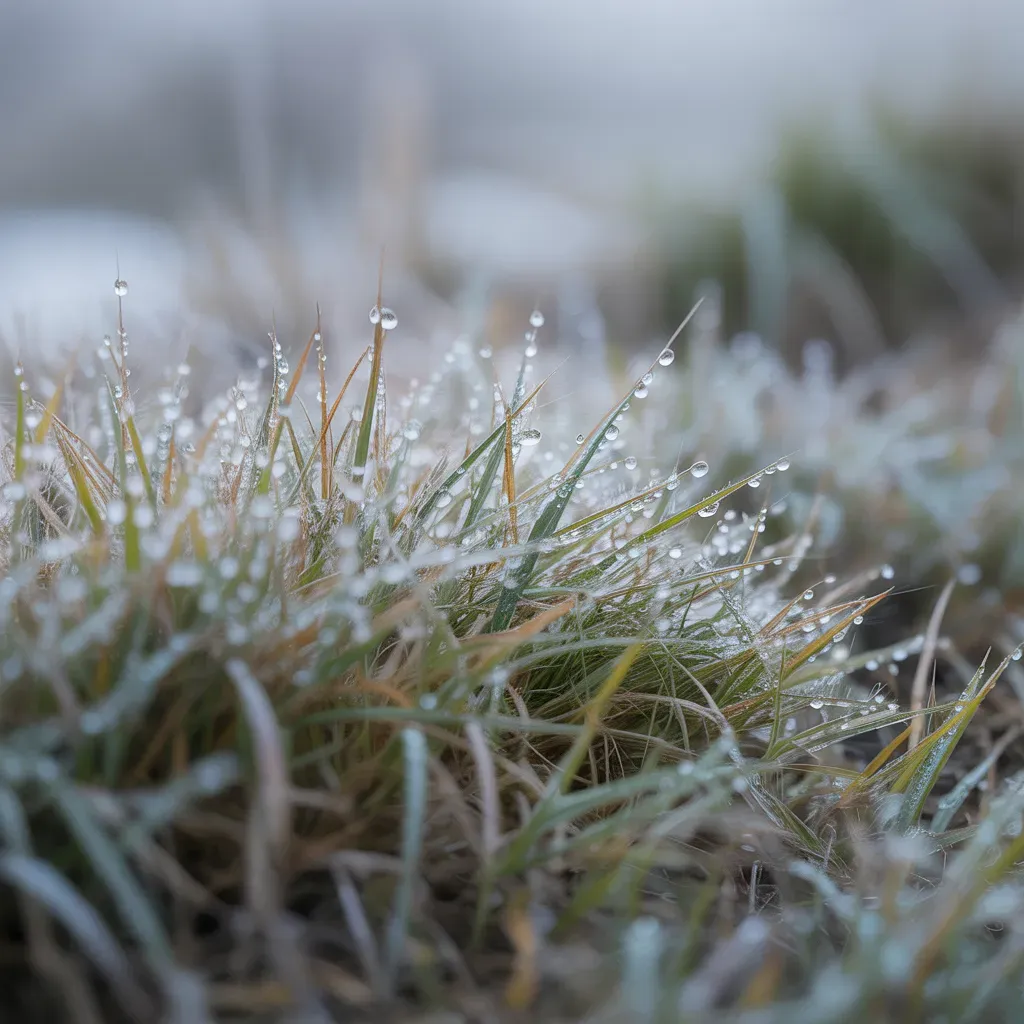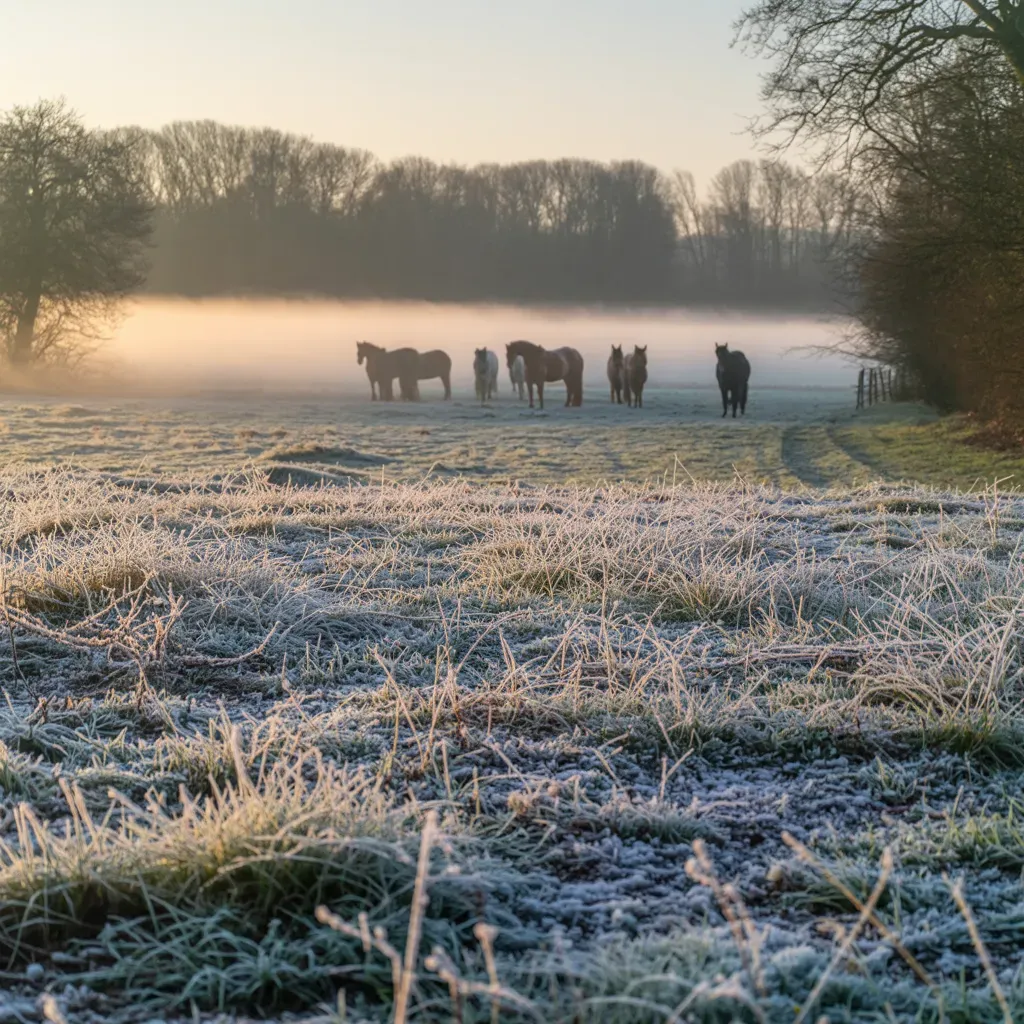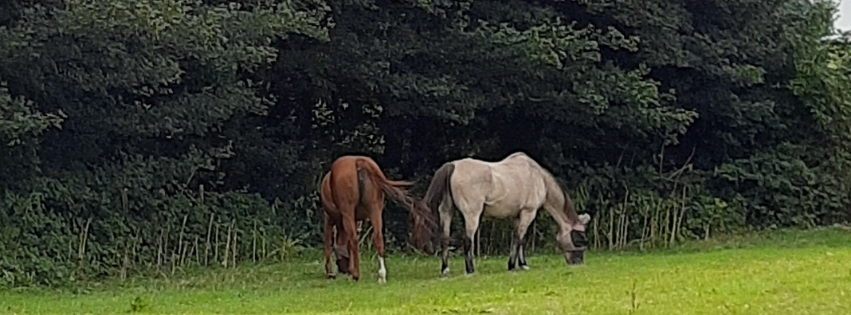Histamine Intolerance - the new kid on the block
Histamine intolerance? What the heck is it? For that matter, what is histamine, and why is it so important?
Thing is, these days there's too much histamine going on out there, and it's making many already established health syndromes even worse, with humans and horses alike suffering all the more.
Histamine in the right balance is the body’s friend, released when there's an allergic reaction. Simples. We know this. Histamines are a bit like a club's bouncer on the door, helping the body get rid of something that's bothering it, as in an allergy trigger, aka ‘allergen’. Histamines start the process that hustles those allergens out of the body or off the skin.
Thing is, there’s a new kid on the block and we need to take notice of it because it’s a now a Big Thing - histamine intolerance. What is it? It's when too much histamine is being made by the body which causes its own allergic response, and the body feels seriously crap. The symptoms can be anything and everything from swelling to fluid retention, and so much more. It’s now recognised as a spectrum illness, with mild, moderate and severe levels to it. So let's dig a little deeper into what histamine is, and why the body is now developing a resistance to it.
NB. As is usual, there's very little equine research out there, so this is based on recent human research and comparisons made to our horses.
Histamine
Histamine itself is found naturally in the body; the body makes it and, yes, we also consume it. It’s released by ‘mast cells’, one of the white blood cell team (the immunity protector cells) and they sit in the body’s connective tissues’ interstitial fluid, which is the thin layer of fluid which surrounds each and every one of the body’s cells. Ideally situated for when they have to spring into action.
Mast cells are one of the body’s best friends, having recently been shown to have key roles in the initiation of adaptive immune responses, literally the body's killer army, and specifically relating to their role in allergies. They possess multiple pathogen recognition systems, and store large quantities of fully-active inflammatory mediators, which make them superior immunity sentinels, releasing the very earliest alarm when an offending allergy-triggering offender dares to land on the doorstep.
Mast cells contain granules rich in histamine (and also heparin, the blood clot preventer), and release histamine as a first responder to those offending organisms.
Yet histamine intolerance is now becoming a new label – it’s become so prevalent these days that there’s even a new medical diagnosis for it – MCAS - Mast Cell Activation Syndrome.
MCAS is not just on the rise, it’s significantly on the rise. Most of us are familiar with typical raised histamine conditions/MCAS, i.e. hives, peanut allergy, raised welts from a bee sting, and dermatographia – sounds weird but you may know it - essentially it’s where you scratch your fingernail on your skin and it creates a raised red welt – you can literally write your name on your back in raised letters. Doctors actually use this letter-writing method to determine histamine levels in a patient, because when the mast cells have either excess histamine in them or they release histamine too easily, the body will develop dermatographia, so seeing letters swell up on the skin before your eyes is a surefire way to determine if there are excess levels of histamine in the body.
However, there are a whole host of other multiple symptoms now coming to the fore, related to histamine intolerance, but sadly they’re poorly diagnosed, often mistreated, and they're causing real suffering.
So, what’s behind this increase in mast cell activation?
Here’s one clue for starters, and it’s all to do with our mobile phones and wifi, seriously. A recent Swedish study (Johannsen et al) shows that the effect of EMF - electro magnetic frequencies (mobile phones, mast towers, wifi, you name it) - on mast cells causes susceptible individuals to release more histamine that drives this allergic inflammatory response.
Most conventional doctors don’t know about MCAS – their current approach remains that if there’s too much histamine, take an antihistamine.
Trouble is, histamine also works as a neurotransmitter – when you take an antihistamine, what happens to you? You get drowsy. Exactly! Because – histamine’s actively involved in the sleep/wake cycle. When histamine’s at high enough levels it stimulates the brain – too much or too little histamine is bad, so when you attempt to block histamine, TaDah! You actually get sleepy.
(Science nerd alert - one particular pharma drug out there, Modafinil (sold under the brand name Provigil, among others), is a pharmaceutical medication to treat sleepiness due to narcolepsy, shift work sleep disorder, or obstructive sleep apnea - it actually targets histamine to keep levels higher to keep the brain awake.)
What symptoms are now being triggered by MCAS?
Food intolerances are common, as many histamine triggers are in the diet, so much so that some people are on restricted diets because certain foods trigger histamine release. Equine-related Clue No.1.
Some foods also contain an amino acid, histadine, mainly found in meat, which when digested is converted into histamine. Normally the body can process this but when there’s too much ingestion of histamine, or too much production of histamine, enter histamine intolerance, typically affecting people with food allergies.
So what foods are high in histamine, and best avoided? Bacteria produce histamine, so leftover food, aged cheeses, cured meats - bacteria will start to break down histadine - that's me being careful with last night's leftovers then. I hate to kill the love for fermented foods as well – which for the record also feature highly in our kitchen - but fermented foods are fermented by ... bacteria!. These amazing health foods, sauerkraut, kimchi, miso, yogurt … this is where eating these wonderfully healthful foods, in a person with histamine intolerance, is like putting petrol on a fire.
Other symptoms that tend to be misdiagnosed? Allergy brain for starters, feeling fuzzy/foggy in the brain, often with associated bad headaches/migraines, due to excess amounts of histamine which is now known to have an impact on the brain.
Then there’s nasal congestion, sinus issues, fatigue, digestive problems, menstrual cycle problems, nausea, vomiting … and if it’s really severe we’re into cramping, palpitations, anxiety, wonky temperature regulation. Then there’s oedema, fluid retention, swelling, puffy legs – sound familiar? Cue equine-related Clue No.2.
Why? Because histamine has a direct action on the lymphatic system. Those mast cells, filled with too much histamine, sitting in the interstitial fluid surrounding every cell in the body, are now leaking the excess histamine straight into the lymph fluid, which, when it’s overburdened with toxins and twinned with lack of movement, becomes sluggish and the flow slows down, resulting in swelling/oedema.
Another connection – and yes it relates to my favourite topics – leaky gut and the microbiome - cue equine-relatied Clue No. 3. When the body has dysbiosis of the microbiome (SIBO - small intestinal bacterial overload), the negative gut microbes (bacteria again!) cause the mast cells to produce more histamine. When there’s excess histamine in the digestive tract, enter food intolerances. Equally, the negative bacteria may be causing the digestive breakdown of histadine into histamine, so it’s that old dodgy-gut thing again.
Diagnosis
So how does a doctor diagnose these various symptoms as a histamine intolerance? What tests - other than a SIBO test - are there? Well, as per usual, testing hasn’t reached our horse world, so we can only go by the human world. Currently, histamine can be measured in the blood; another marker for mast cell activation, the enzyme tryptase, can also be measured; also n-methyl histamine, a breakdown product of histamine, can be measured. There are many more methods, i.e. enzyme testing and so on, but if I ran through them all here your eyes would glaze over.
Ultimately it all comes down to one size does not fit all. We’re all unique, whether horse or human, and it’s all about precision food medicine, as in precision nutrition. Some people do great on vegan diets; others do terribly. Some do brilliantly on Keto, others not so. Eating avocados and shellfish might be great for some, but might be killing others, never mind the wine and beer we (I) love so much as well! And as for our horses, some aren't bothered at all by the spring pollens - others are floored by it. It’s very much about personalising what’s right for that particulary genetic make-up – every individual body is different. To quote one of my favourite Function Medicine doctors, "Genes load the gun, but it's diet, lifestyle, and environment exposures that pull the trigger."
Where does Functional Medicine fit in?
Which links us nicely to one of the many concepts of Functional Medicine, where one disease (as in dis-ease, where the body is ill at ease) can have many causes - histamine intolerance is not alone here as it can have many causes. And one cause, such as that great masquerader, Lyme disease, can create many diseases across the board, such as neurological issues, joint and skin issues, chronic fatigue, dementia ... the list goes on. And … lyme is also associated with histamine intolerance because the lyme bacteria resides/hides in the connective tissue in the body, which in turn can activate the mast cells.
There are also a lot of drugs that can interfere with histamine and warning, this list is scary – antibiotics, antidepressants, antipsychotics, diuretics; even muscle relaxants, pain meds, my nemesis PPIs ... even over the counter meds like Aspirin – all can be driving this histamine intolerance. Cue equine-related Clue No 4 - several meds here relating to horses ☹
It’s been shown that certain nutrients can break down histamine, i.e the B-vits 1, 6 and 12, folate, vit.C, copper, zinc, magnesium, calcium - all critical nutrients, and foods high in Quercetin, a natural antihistamine.
Ginkgo biloba is high in quercetin (also said to be beneficial for Covid), as is good old Turmeric. As is my friend, the odd glass of red wine 😉 The wondrous and super-nutritious Nettle is also known as a beneficial antihistamine as it can block the receptor sites that histamine usually latches on to, all due to its antagonist/negative agonist activity but I won't blind you with the science behind that one. And remember the enzyme tryptase from earlier, that's released alongside histamine and which promotes its effects? Nettle also inhibits tryptase - clever nettle. Both Ginkgo and Nettle feature in our PollenTonic blend.
Which links us nicely to our horses
Definite clues and comparisons to be had here – certainly the lymphatic connection, i.e. puffy leg syndrome, lymphangitis, CPL (chronic progressive lymphodema). And of course, all those spring tree pollens and summer grass pollens are all dumping themselves on our horses’ grazing, with no doubt plenty of pollen residue in their hay as well, which they’re then ingesting.
When you look at the Big Picture, ultimately it’s yet another case of removing the bad, replacing with the right food and nutrients, looking after the microbiome, fixing the leaky gut, and letting the healing begin.
Originally written Jul'21, copied over from our old website










